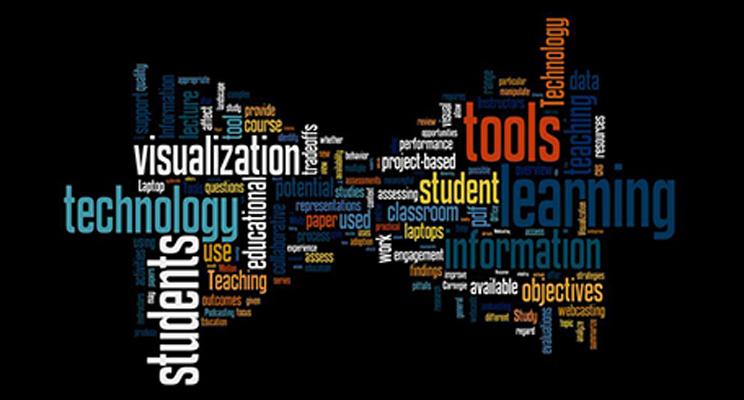
“Ultimately, Teaching with Technology is making me a much better teacher and scholar”
How are UW graduate teaching assistants across the humanities and social sciences using technology in their classrooms? This year, English graduate students Rachel Arteaga and AJ Burgin have organized Teaching with Technology, a Graduate Interest Group (GIG) at the Simpson Center, so that graduate instructors can share ideas with one another. The group provides a platform for both experienced and less-experienced teachers to discuss digital tools (for example, the use of mobile devices, social media, and blogging) in various classroom settings.
According to Arteaga, the idea for the Teaching with Technology GIG emerged from an introductory English course on pedagogies of composition taught by Anis Bawarshi. “Several of our readings brought up questions of the role of technology in our classrooms, leading to conversations about how we might use technology in our own pedagogical practices,” she says. Students began meeting informally to continue discussions, and last spring Arteaga and Burgin decided to seek Simpson Center funding so that they could broaden the scope of their group’s queries through crossdisciplinary collaboration.
Each quarter, Teaching with Technology focuses on a larger project through regular meetings. “Fall Quarter was aimed at familiarizing ourselves with existing scholarly conversations about digital humanities in general and teaching with technology in particular,” says Burgin. “We began by creating a website to share resources, including a number of critical readings, which we then discussed. From those discussions, common concerns across disciplines have emerged that we hope to address in Winter Quarter’s project, which entails the development of concrete teaching resources through Canvas and Tegrity.”
Canvas, an open-source learning management system, and Tegrity, software that allows instructors to record audio- and video-based lectures and make them available online for students, are two of the digital tools that GIG members are exploring. Additionally, the group is developing an online resource library in which they collect, develop, and post materials, such as lesson plans, readings, videos, and techniques for translating lessons across different disciplines. Since access to technology varies across UW classrooms, the group is working to ensure lessons and materials can be easily adaptable. The GIG is considering platforms like Omeka and Scalar as generative for pedagogical practices as well.
Several Teaching with Technology GIG members are taking part in broader-reaching discussions and exchanges by serving as HASTAC Scholars for the 2013-14 academic year. According to Burgin, “The opportunity to be involved with the HASTAC Scholars Program has allowed many of us, myself included, to explore collaborative learning and projects with scholars on a global scale.”
Arteaga agrees. “HASTAC defines itself as a ‘collaboratory’ for crossdisciplinary work using new forms of technology. So, it is a perfect fit for us,” she says. “Graduate students who are participating in our group can not only explore work being done at peer institutions, but also publish on our findings in a high-profile online space. This allows for immediate feedback from fellow practitioners, which is pushing our research in new and exciting directions. Instant, open-access peer review of this kind is highly beneficial to our group and individual work, as we can learn from the collective expertise of HASTAC scholars.”
Arteaga’s doctoral research focuses on theories of affect and the emotions as a critical frame for reading modern American fiction. She is also completing a Certificate in Public Scholarship through the Simpson Center. For it, she has developed a project to assess the uptake of digital humanities resources in high school English classrooms, particularly in rural communities across Washington. Her involvement in Teaching with Technology reaches across all of her scholarly interests, and she finds the level of engagement at each GIG meeting invigorating. “Our participants bring professionalism and enthusiasm to our discussions,” she says. “That kind of energy is the basis for the culture of innovation our group is trying to promote.”
Burgin, who studies the impact of technologies on early twentieth-century masculinities through literature and fashion, also enjoys the collaborative element of the GIG as well as the ways in which it has impacted her own research and pedagogical practices. “Ultimately, Teaching with Technology is making me a much better teacher and scholar,” she says.
Arteaga and Burgin plan to host GIG workshops open to instructors of all levels and all disciplines at UW during Winter Quarter. They also hope that GIG members will be able to build on their work through online communities such as HASTAC and present to larger audiences through publication, local symposiums, and national conferences.